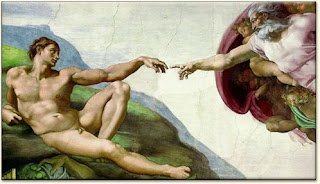Number 1 by Jackson Pollock, 1949, 5'3"*8'6", Museum of Contemporary Art, Los Angeles.
At first look, the painting looks like a mutlitude of curved lines, arcs, spots everywhere: green, yellow, white and colors in that tone.
To create such a painting, Pollock had unstretched canvas on the floor and painted on it directly, from above, with precise gesture. The painting was already in his mind, he only had to reproduce it and could not be stop in his process. It was like a transe, he knew precisely what he wanted to reproduce and dripped the paint on the canvas with no hesitation.
The purpose of Pollock's painting was for people to lose themselves in the contemplation of his work, to forget about the outside world, see and imagine whatever made us feel better out of it. Pollock's work is indescribable but full of energy, of emotions that comes toward us in a wave. He is to me one of the most unexpected artist of this century and one of the most talentuous: indeed, he is able to transmitt emotions through a work that, from an outside cold look, looks like nothing when it is everything.
In his unapologetic materialism there are refreshing and unregenerately American qualities, as there are in his effort to breathe spirit into the refractory matter he chose to make the substance of his art. These distinctly native qualities mix matter-of-fact realism with respect to materials, and an innocent idealism. Only a supreme innocent would have felt free to disregard the intrinsic appeals and cultivated uses of the language of paint, and gambled with raw pictorial effects to the degree that Pollock did. And only an idealist of transcendent powers could have won from such patently non-artistic content a deep and moving lyricism.
Jackson Pollock
The Bulletin of the Museum of Modern Art
Vol. 24, No. 2, Jackson Pollock (1956 - 1957), pp. 3-16+18-19+21-36
Vol. 24, No. 2, Jackson Pollock (1956 - 1957), pp. 3-16+18-19+21-36






